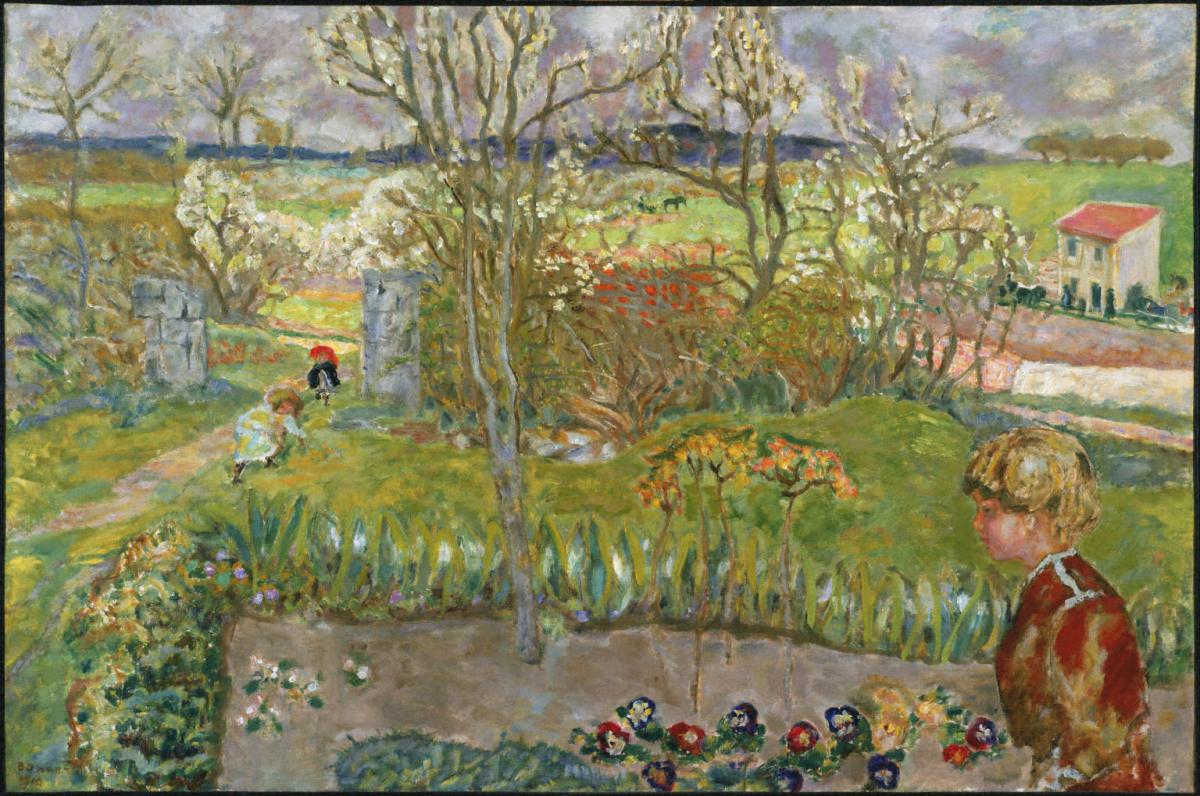Early Spring
Pierre Bonnard ( 1908 )

The northern landscapes of Bonnard’s early years, such as Early Spring, prophesy the majesty of his late Mediterranean canvases, while encompassing Nabi echoes, classical grandeur, and the allure of Bonnard’s native northern France. As Bonnard’s provincial sojourns lengthened after 1900, the countryside’s lush beauty became the leitmotif for his entire oeuvre. The deep love of nature that he had formed at the family home in the Dauphiné region found expression in the motif of the garden.
The human hand within nature is the primary motif in Early Spring, as seen in the carefully turned flower beds, stone gateway, and distant house. These elements tame the natural world and impose a linear geometry upon it. Bonnard masterfully transformed the theme of spring’s tender beginnings into a decorative, unusually constructed composition in which the view does not recede but clings flatly to the picture surface. A flower bed gives way to a small expanse of lawn which in turn is interrupted by a small thicket, and beyond this enclosed area are a road, an immense field, and distant hills; the entire scene is defined by a high horizon line.
The border of crisp tulips, the stone wall, and other manmade features segment the composition—a geometry countered by the play of sinuous arabesques formed by the trees. A newfound radiance of color is also apparent: overlaid on the predominant tones of luminous gray-green are impressionistic daubs that accent the flowers; an impulsive, somewhat random use of lime green seems to give a passing nod to Fauvism.
Phillips admired Bonnard’s “discovery of the subtle relation between a season and a state of mind … [His] color suggest the restlessness, the strange blend of ecstasy and melancholy which makes us more … aware of growing things in April than any other time of the year.”